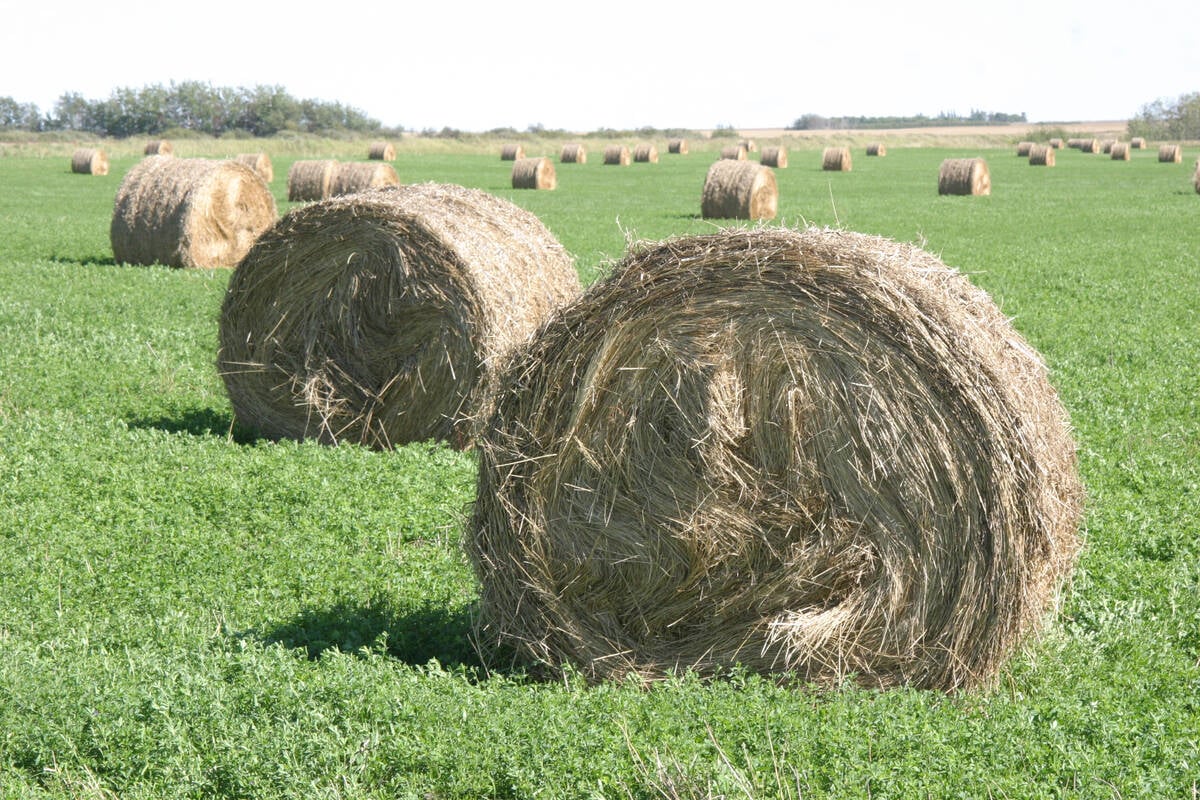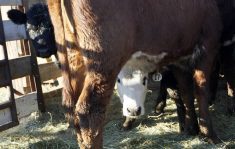RED DEER – Beef producers may be able to make money in an otherwise soft cattle market this year if they can raise a steer that grades high on quality.
“If you can produce the higher grading cattle as far as quality grade, you’re going to have a readily available market to you and it is going to move those cattle,” Duane Lenz of the Colorado based market analysis firm Cattlefax told an Alberta beef industry conference in Red Deer Feb. 24.
He said demand for beef remains strong on both sides of the border, but the dynamics are changing. People are willing to spend more on high quality beef while shying away from the lower grades.
Read Also

Breaking down successful winter feeding into six steps
It’s that time of year when it is important to start planning for a cow herd’s winter feeding program. Here are six steps I think are necessary to consider when getting your feed tested.
The U.S. market has noted a record spread between prices paid for Choice and Select. Choice is equivalent to the Canadian AAA grade while Select is equal to the A grade.
Canadian retail beef prices have also remained strong, even as the cattle industry reeled under the weight of closed markets due to BSE. Demand has improved slowly and steadily since the mid-1990s and it is expected to remain strong.
“There is nothing to suggest to us that demand is going to alter in Canada,” Lenz said.
In the past the Canadian and American industries tended to be parallel. However, in the most recently released inventory reports, the Canadian inventory is shrinking while the U.S. is experiencing a minor expansion.
Statistics Canada reports the herd dropped to 14.32 million from its peak of 15 million the previous year. More downsizing is expected, with probably another 500,000 cattle removed to level out inventories going into 2008. The herd is still larger than the pre-BSE period, when there were about 13.5 million head.
The beef cow count is at five million, down 263,000 from 2006, while the dairy herd remained the same size.
The reduction is coming from a large cow slaughter. In 2006, 800,000 cows were killed. It will probably take a couple years to drop back to the more normal cull rate of 600,000 cows.
Total cattle inventory in the United States is up slightly to 97 million, an increase of 300,000 from last year.
“In contrast to Canada, we think we are going to have some more growth as far as numbers are concerned,” Lenz said.
“By the end of the decade it wouldn’t surprise us to get to the 100 million mark or just a shade over that.”
Further expansion has been hindered because of severe drought in the main cow states.
“Half our cow herd is in an area that is extremely dry,” he said.
“That has really slowed down the numbers.”
Another influence is the high price of corn driven up by the demand for ethanol production.
Fewer calves are going into feedyards and are instead staying on grass or in backgrounding lots where feed is cheaper.
The U.S. cattle-on-feed report as of Feb. 23 showed placements were 77 percent of a year ago.
The escalating price of feed grain is the hot topic for 2007.
“It is putting the fear of God into every cattleman,” Lenz said.
“For the corn grower, this is Christmas every day of the week.”
Corn producers harvested the country’s third largest crop in history in 2006, with demand set at around 12 billion bushels, the same amount as was harvested.
“Every time you use what you are raising, it makes traders nervous,” Lenz said.
Ethanol demand for corn increased from zero to two billion bu. in the last two years and by the end of the decade biofuel production could require five billion bu.
That is creating chaos in the cattle markets for live animal prices and the ability to at least break even when fat cattle are sold for processing. As well, an adjustment is coming in cattle feeding areas where expansion is occurring closer to the ethanol producing regions.
Forty-six percent of cattle are fed in the southern Plains, while 11 percent are finished in the northern plains states such as South Dakota, Iowa and Nebraska.
An extra 120,000 head have moved to these regions, with Nebraska expected to increase feeding capacity.
Feedlots in these regions will be the customers of the future for Canadians exporting feeders to the U.S.
The cost of gain is cheaper in the northern Plains, but changes may occur in the business because northern feedyards are smaller and operators are less experienced than feeders in Texas and Oklahoma.
The higher price of corn has strengthened all grain prices. Because feed is a major input cost, it affects how much feedlots are able to pay for calves.
In 2006, U.S. feeders lost about $30 US per head on average, which means a roll back on calf prices is expected throughout the year.















